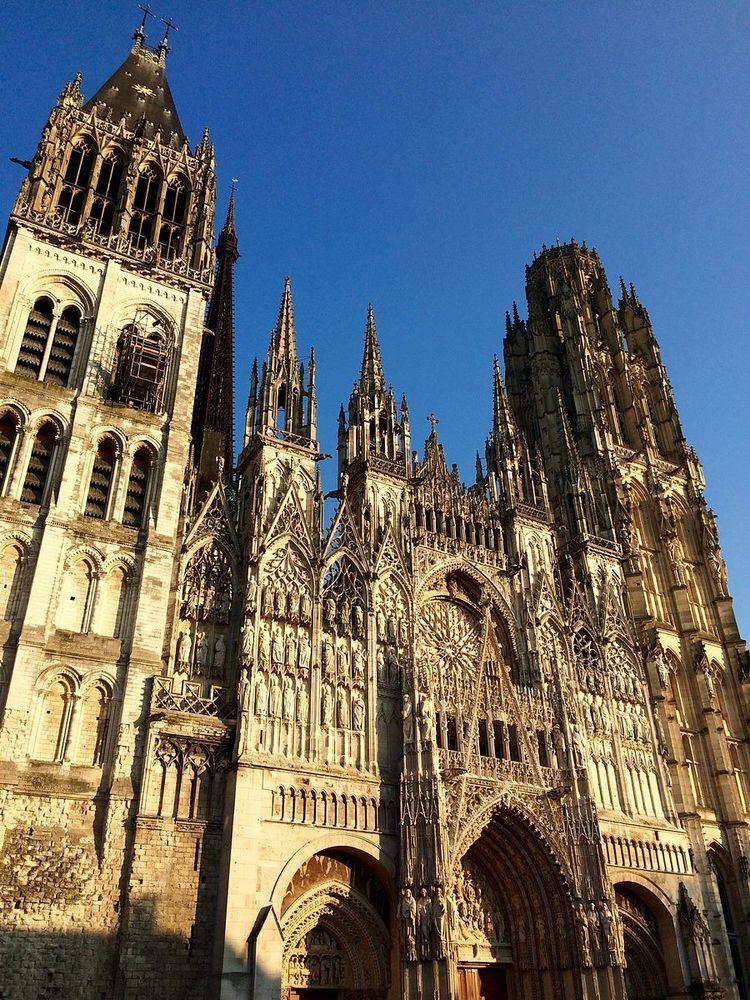Phone +33 2 35 71 20 52 | Established 5th Century Area 4,228 km² | |
 | ||
Population- Total- Catholics (as of 2014)868,500652,000 (75.1%) Hours Closed now Tuesday9AM–7PMWednesday9AM–7PMThursday9AM–7PMFriday9AM–7PMSaturday9AM–7PMSunday9AM–7PMMonday9AM–7PMSuggest an edit Profiles | ||
The Roman Catholic Archdiocese of Rouen (Latin: Archidioecesis Rothomagensis; French: Archidiocèse de Rouen) is an Archdiocese of the Latin Rite of the Roman Catholic Church in France. As one of the fifteen Archbishops of France, the Archbishop of Rouen's ecclesiastical province comprises the majority of Normandy. The Archbishop of Rouen is Dominique Lebrun.
History
According to legend, developed in the XI century, the diocese was founded by Nicasius, a disciple of St. Denis who was martyred after arriving in Normandy towards the end of the first century on a mission from Pope Clement I. Most of the episcopal lists of the Diocese of Rouen, however, omit Nicasius' name. Rouen became an archdiocese probably around 744 with the accession of Grimo. Archbishop Franco baptized Rollo of Normandy in 911, and the archbishops were involved in the Norman conquest of England in 1066. Normandy was annexed to France in 1204, and Rouen was later occupied by England from 1419 to 1449 during the Hundred Years' War. In 1562 the city was briefly captured by Huguenots during the French Wars of Religion.
The suffragan dioceses of Rouen in the Middle Ages were Évreux, Avranches, Seès, Bayeux, Lisieux, and Coutances. Today its suffragans are the Diocese of Évreux, the Diocese of Bayeux and Lisieux, the Diocese of Coutances, the Diocese of Le Havre, and the Diocese of Sées.
The seat of the archbishop is the 13th century Gothic Rouen Cathedral. The Cathedral Chapter is composed of ten dignities (the Dean, the Precentor, the Treasurer, the Archdeacon Major, the Archdeacon Augi (Eu), the Archdeacon of Cales-Major (Grand-Caux), the Archdeacon of Velocassium Franciae (Vexin Français), the Archdeacon of Velocassium Normanniae (Vexin Normande), the Archdeacon of Cales-Minor (Petit-Caux), and the Chancellor); in addition there were forty-seven Canons (which included the offices of Succentor, Theologian and Penitentiary).
In addition to the right to nominate the Archbishop of Rouen (from the Treaty of Bologna of 1516, between Francis I and Leo X), the King of France also enjoyed the right of nomination of a considerable number of benefices in the archdiocese. These included: twenty-four abbeys; fourteen priories; the Dean and Canons of the Church of Notre-Dame-de-la-Ronde in Rouen; and the Dean and nine prebends of the Church of Saint-Mellon-de-Pontoise.
The Cathedral was heavily damaged, along with other buildings in Rouen, during World War II and later rebuilt. The archdiocese was the site of the terrorist attack at the church of Saint-Étienne-du-Rouvray.
